
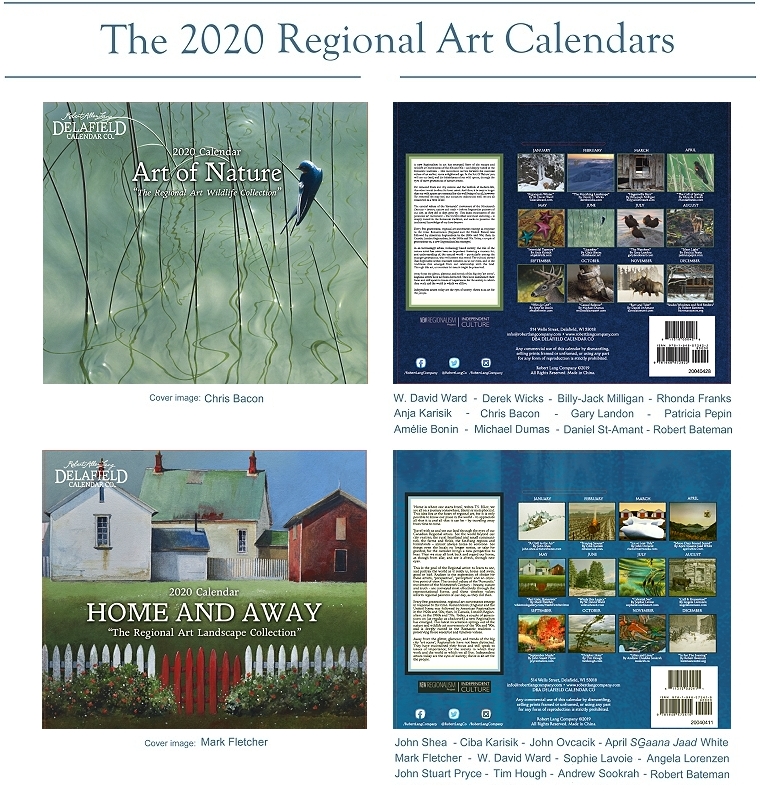 |
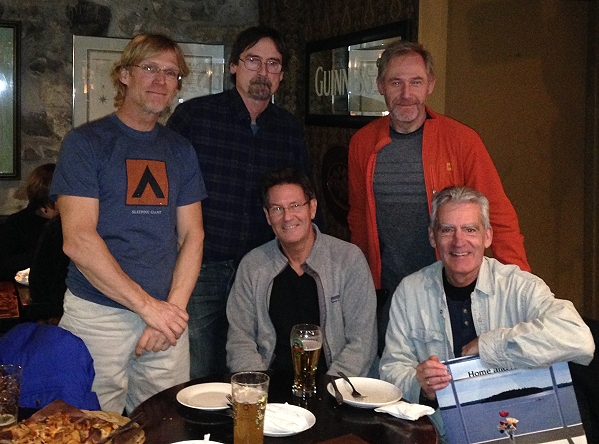 |
A recent gathering, in Ancaster, Ontario, to celebrate the fact that our two 2020 Regional Art calendars (sample jackets at least) just went to press. Seated, are our two cover artists: (on the left - The Art Of Nature) Chris Bacon and (right - Home And Away) Mark Fletcher. Behind (left to right) Gary Landon, Tim Hough and W. David Ward. notably absent here, is the cover artist from our 2019 collection (details below), who lives too far from Ancaster to make to the trek in on a week night, Wayne Mondok. |
In keeping with the central idea of Regionalism, the selection process was entirely democratic; the artists themselves selected the cover artist for each collection. Each artists has two votes, and the artist with most votes, naturally, appears on the cover. Since 2019 sold out so quickly, Wayne has been offered his own calendar for 2020, which is why he doesn't appear in the new collections. The same process resulted in Chris and Mark being selected for the 2020 Regional art collections. (see Wayne's new calendar immediately below) |
 |
More on At The Water's Edge in future updates |
Following the success of the first Regional Art calendar project, for 2019, we are introducing
a second collection, featuring independent artists from across the country.
The 2020 Home & Away will be accompanied by The Art Of Nature, a collection of works by some of the most skilled painters in Canada. These projects showcase established house-hold name artists, along side young and mid-career painters, providing a continuity that spans three generations. While fostering a greater awareness of the importance of independent culture – upon which both free-expression and Social Commentary depend – we seek to develop a new economic model for artists, to ensure that the 'Eyes of Society' can continue to share with the world what they see. These two new projects will be distributed from coast to coast in Canada, from coast to coast and border to border in the United States, providing unparalleled exposure for the featured artists, and some additional income to boot. These projects are also a vehicle to tell the almost forgotten story of Regional Art – an 'art for the people' that is rapidly disappearing from the 'official' history. |
Join us in this endeavour and support your independent artists. Please order you copy/copies now. Landscape and Nature artists (all styles and media) feel free to contact us if youwould like your work to be considered for future collections. |
Participating Artists
Brent Townsend - Andrew Cheddie Sookrah - John Ovcacik - April SGaana Jaad White Wayne Mondok - Anja Karisik - Angela Lorenzen - W. David Ward - Michael Dumas - John Stuart Pryce - Mark Fletcher - Gerry Sevier |
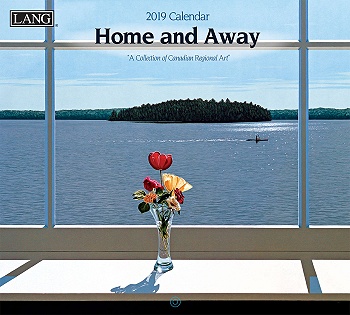 |
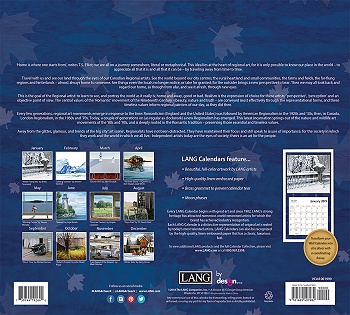 |
|
Cover image: Wayne Mondok |
See text (immediately below) |
Home & Away:
‘Home is where one starts from’, writes T.S. Elliot; we are all on a journey somewhere, literal or metaphorical. This idea lies at the heart of Regional art, for it is only possible to know our place in the world – to appreciate all that it is and all that it can be – by traveling away from time to time. Travel with us and see our land through the eyes of our Canadian Regional artists. See the world beyond our city centres; the rural heartland and small communities, the farms and fields, the far-flung regions and hinterlands – almost always home to someone. See things even the locals no longer notice, or take for granted; for the outsider brings a new perspective to bear. Then we may all look back and regard our home, as though from afar, and see it afresh, through new eyes. This is the goal of the Regional artist: to learn to see, and portray the world as it really is; home and away, good or bad. Realism is the expression of choice for these artists; ‘perspective’, ‘perception’ and an objective point of view. The central values of the ‘Romantic’ movement of the Nineteenth Century – beauty, nature and truth – are conveyed most effectively through the representational forms, and these timeless values inform regional painters of our day, as they did then. Every few generations, regional art movements emerge in response to the time: Romanticism (England and the United States was followed by American Regionalism in the 1920s and ‘30s; then, in Canada, London Regionalism, in the 1960s and ‘70s. Today, a couple of generations on (as regular as clockwork) a new Regionalism has emerged. This latest incarnation springs out of the nature and wildlife art movements of the ’80s and ’90s, and is deeply rooted in the Romantic tradition – preserving those essential and timeless values. |
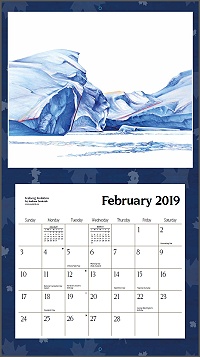 |
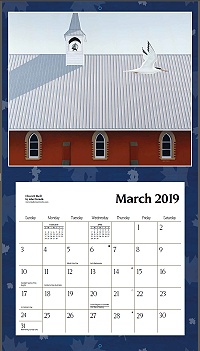 |
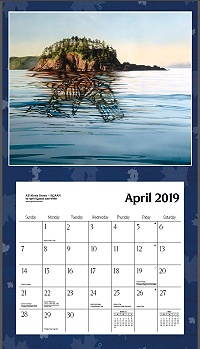 |
||
Andrew Sookrah |
John Ovcacik |
April White |
||
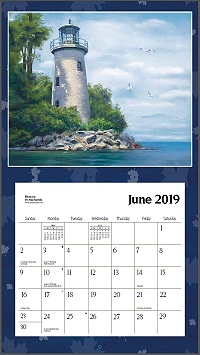 |
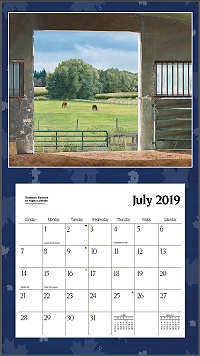 |
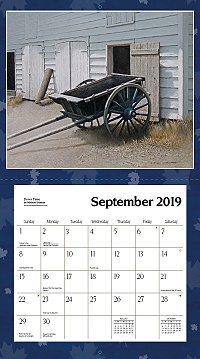 |
||
Anja Karisik |
Angela Lorenzen |
Michael Dumas |
The Art Of Nature:
A new Regionalism in art has emerged. Born of the nature and wildlife art movements of the 80s and 90s – and deeply rooted in the Romantic tradition – this movement carries forward the essential values of an earlier, more enlightened age. In the 'Art Of Nature' you will see our land, and the inhabitants of our wild spaces, through the eyes of three generations of nature artists. Far removed from our city centres and the hubbub of modern life, this other world is often far from mind. And thus, it is easy to forget that our wild spaces are essential for the well being of us all; however 'far removed' we may feel, our ancestors understood well, we are all connected in a 'web of life'. The central values of the ‘Romantic’ movement of the Nineteenth Century – beauty, nature and truth – inform Regionalist painters of our day, as they did in days gone by. This latest incarnation of the perennial art movement – the world's oldest and most enduring – is deeply rooted in the Romantic tradition, and seeks to preserve the traditional knowledge of our fore-bearers. Every few generations, regional art movements emerge in response to the time: Romanticism (England and the United States) was followed by American Regionalism in the 1920s and ‘30s; then, in Canada, London Regionalism, in the 1960s and ‘70s. Today, a couple of generations on, a new Regionalism has emerged. In an increasingly urban, technology based society, the role of the nature artist has never been so important: fostering a concern for, and understanding of, the natural world – particularly among the younger generations, who will inherit this world. The cultural thread that Regionalist artists maintain connects us to our roots, and to the traditions that emerged from our relationship with the land. Through this art, a reverence for nature might be preserved. Away from the glitter, glamour, and trends of the big city ‘art scene’, Regional artists have not been distracted. They have maintained their focus and still speak to issues of importance; for the society in which they work and the world in which we all live. Independent artists today are the eyes of society; theirs is an art for the people. |